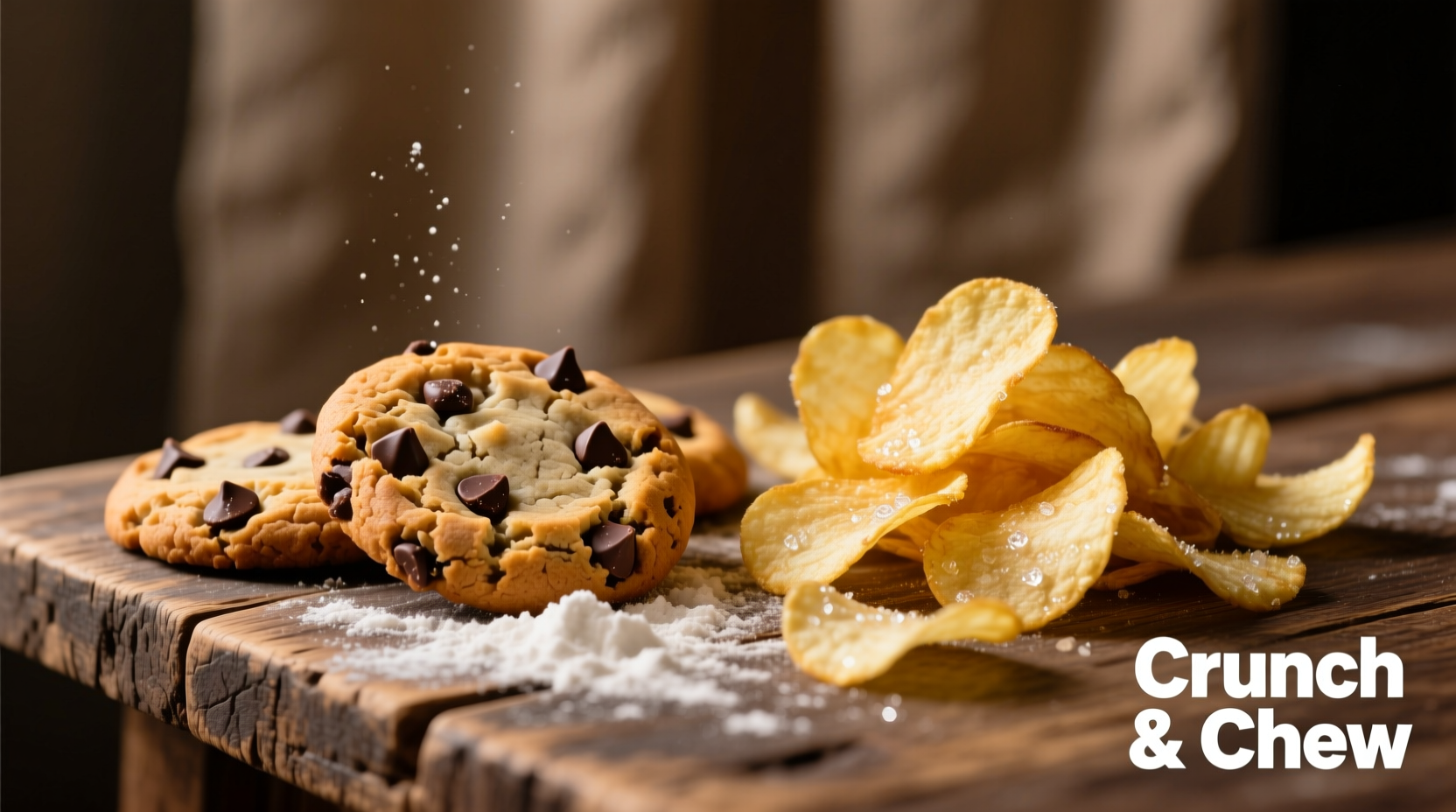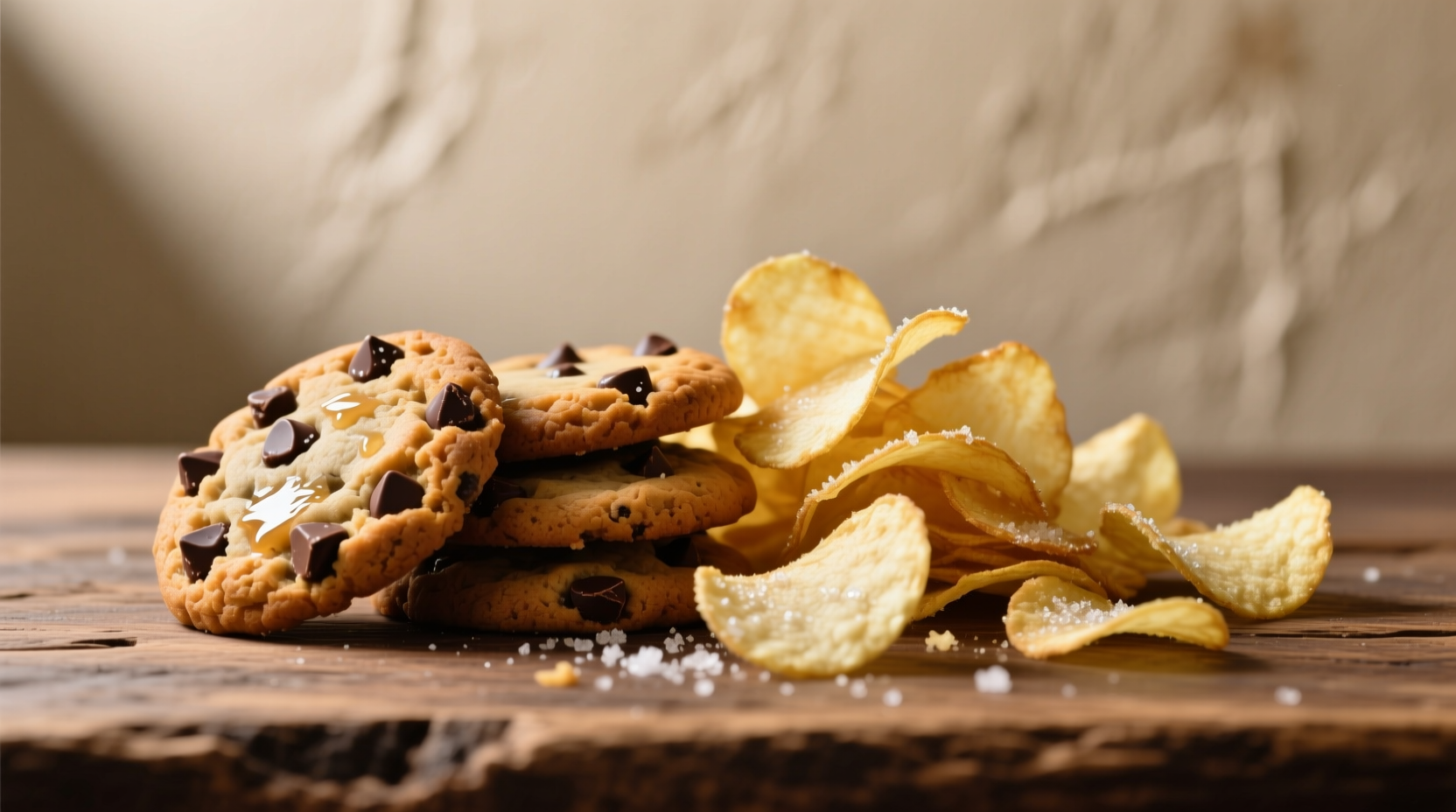Why These Snacks Occupy Different Craving Categories
Understanding why chocolate chip cookies and potato chips trigger different cravings begins with their basic composition. Cookies satisfy sweet tooth desires through sugar and fat combinations that activate dopamine pathways, while potato chips deliver umami and salt sensations that stimulate different pleasure receptors. This biological distinction explains why snackers typically prefer one category over the other during specific craving moments.
| Characteristic | Chocolate Chip Cookies | Potato Chips |
|---|---|---|
| Primary Taste Profile | Sweet with bitter chocolate notes | Savory with salty umami |
| Texture | Soft/chewy or crisp | Crisp/crunchy |
| Key Ingredients | Flour, sugar, butter, chocolate | Potatoes, oil, salt |
| Origin Year | 1930 (Toll House recipe) | 1853 (Saratoga Springs) |
The Evolution of America's Favorite Snacks
Tracing the historical development of these snacks reveals why they've maintained separate culinary identities. Chocolate chip cookies emerged from Ruth Wakefield's 1930 kitchen experiment at Massachusetts' Toll House Inn, when she substituted broken chocolate pieces for baker's chocolate in cookie dough. This innovation, documented by the Smithsonian Institution, created an entirely new cookie category.
Potato chips have an even longer history, dating to 1853 when chef George Crum in Saratoga Springs, New York, created thin fried potatoes in response to a customer's complaint about thick French fries. As recorded by culinary historians at the Library of Congress, this accidental invention launched America's love affair with crispy potato snacks.

Creative Fusion Experiments Worth Trying
While traditional recipes keep these snacks separate, innovative chefs have explored hybrid concepts. The most successful chocolate chip cookies potato chips fusion attempts focus on complementary textures rather than direct ingredient mixing. Consider these approaches:
- Texture contrast pairing: Serve warm chocolate chip cookies alongside lightly salted potato chips to experience sweet-salty interplay
- Chip-crusted cookies: Press crushed plain potato chips into cookie dough before baking for added crunch
- Dipping combinations: Try chocolate-dipped potato chips with sea salt for a quick sweet-savory treat
Food scientists at Cornell University's Food and Brand Lab note that strategic sweet-salty pairings can enhance overall flavor perception when properly balanced. Their research shows that the salt in potato chips can actually intensify chocolate's perceived sweetness when consumed in sequence.
Practical Pairing Guidelines for Snack Lovers
When deciding whether to combine chocolate chip cookies and potato chips, consider these practical factors:
- Occasion matters: Casual movie nights suit separate snack bowls, while dinner parties might benefit from intentional sweet-savory progression
- Flavor intensity: Mildly salted chips pair better with cookies than heavily flavored varieties like sour cream & onion
- Temperature contrast: Warm cookies with room-temperature chips creates optimal sensory experience
- Portion control: Small quantities of each prevent flavor fatigue when experimenting with combinations
Nutritional Considerations for Balanced Indulgence
Understanding the nutritional profiles helps make informed choices about enjoying both snacks. According to USDA FoodData Central, a standard chocolate chip cookie (30g) contains approximately 150 calories with 8g sugar, while a single-serve potato chip bag (28g) averages 160 calories with 150mg sodium. Neither qualifies as health food, but moderate consumption fits within balanced diets.
The key limitation for combining these snacks lies in their competing flavor profiles. As noted by flavor chemists at the Institute of Food Technologists, excessive sweet-salty mixing can overwhelm taste receptors, diminishing enjoyment of both components. This context boundary explains why most successful pairings maintain separation rather than direct fusion.
When Fusion Works (and When It Doesn't)
Culinary professionals have identified specific conditions where chocolate chip cookies potato chips combinations succeed:
- Works well: Sequential tasting (chip first, then cookie) enhances flavor contrast
- Works well: Using potato chips as a textural element in cookie toppings
- Avoid: Mixing cookie dough ingredients with potato chip components
- Avoid: Pairing strongly flavored chips (like barbecue) with delicate cookies
Professional bakers at the Culinary Institute of America recommend starting with simple pairings before attempting more complex fusion recipes. Their testing shows that basic combinations satisfy most palates better than elaborate hybrid creations.











 浙公网安备
33010002000092号
浙公网安备
33010002000092号 浙B2-20120091-4
浙B2-20120091-4